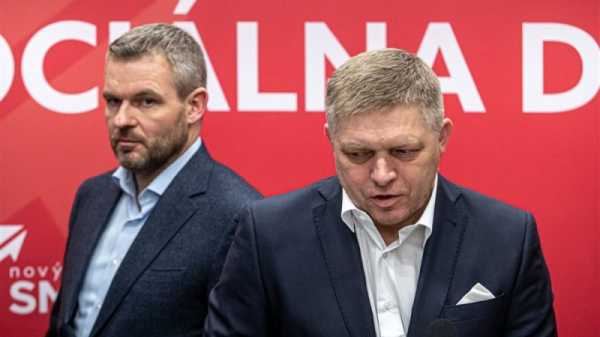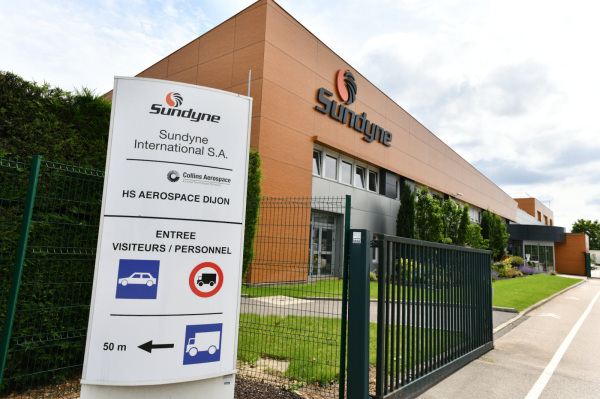
In Slovakia, the right-of-centre minority government of Prime Minister and European Council member Eduard Heger was brought down by a vote of no confidence on 15 October, meaning a snap election in the spring or fall of 2023 seems increasingly likely. Current polls suggest a tectonic shift for the highly fragmented party system if these were to happen.
Recent polls suggest Heger’s centre-right OĽaNO party (EPP) would face a devastating result, dropping from 25.0% in the February 2020 election to only about 7.5%. As the strongest OĽaNO is likely to be replaced by the centre-left HLAS–SD party of former prime minister Peter Pellegrini, which would win 20% in its first election. HLAS–SD is an associate member of the European Party of European Socialists (PES).
HLAS–SD split in mid-2020 from another PES member, SMER-SD, in opposition to its former leader and prime minister Robert Fico. Fico, a controversial figure, in 2016, associated refugees and Muslims with terrorism, claiming that “thousands of terrorists and Islamic State fighters are entering Europe with migrants.” Fico’s SMER-SD is now trailing behind HLAS-SD at about 16%, down from 18% in 2020.
Fico, who had to step down after the widespread protests after the murder of journalist Ján Kuciak, made a big comeback in the last two years. His party, SMER-SD, currently ranks second in the polls but cannot be underestimated. Even if it does not win the elections, forming a new government without it may prove difficult, although HLAS–SD leader Pellegrini appears to be wary of forming a coalition with Fico.
The liberal Progressive Slovakia (PS) party, a member of the European ALDE Party, has been rising in polls over the past months, reaching 11%. In 2020, the party ran on a shared ticket with the SPOLU party (EPP), winning 6.97%. Because multiparty alliances have a higher threshold to enter parliament (7%) than single parties (5%), PS and SPOLU did not win any seats in 2020. A 2022 renewal of that alliance is unlikely, as SPOLU is now polling at less than 1%. SaS, which sits with the ECR Group in the EU Parliament, is polling at 10%.
OĽaNO’s coalition partners have not been able to profit from the party’s collapse. The right-wing Sme Rodina party (ID) is polling at about 8%, in line with their 2020 result. The centre-right Za ľudí party, which sits with EPP in the Parliamentary Assembly of the Council of Europe, collapsed from 6% in 2020 to about 2%, well below the 5% threshold to gain seats in the legislative. These polling figures mean that, if correct, the current government would have less than 20% support if a snap election were to be held today.
The far-right Neo-Nazi ĽSNS party is also facing parliamentary death, with only 2% in the polls, compared to 8% in 2020. However, REPUBLIKA, a far-right split from ĽSNS, would win 6% in its first run. Analysts claim some of the votes for far-right went to the SMER-SD party, enticed by Fico’s controversial rhetoric.
The centre-right Christian Democrats (KDH) are polling at about 6%, meaning the party would be elected to parliament for the first time since 2012. A set of fragmented centre-right parties, which claim to represent the Hungarian-speaking minority, are polling just below the threshold at around 4%.
However, snap elections would require 90 votes in the legislative. The remnants of the ruling coalition have been recently trying a new majority under the leadership of Heger, this time without Igor Matovič as finance minister and without Roman Mikulec (OĽaNO) as interior minister. This group includes part of the ruling OĽaNO, part of the former coalition party SaS and Environment Minister Ján Budaj and his platform, which used to be part of OĽaNO, but left after the no-confidence vote.
President Zuzana Čaputová gave them until the end of January to find a new majority. If not, she said parliament should allow the new elections to happen in June 2023 at the latest. There is a possibility, however, that National Council will block the new elections. In this scenario, elections would happen in Spring 2024 as previously planned.
Most analysts still consider snap elections as the most likely scenario, as there is little chance a new majority will be found.
The possibility of a government which would please urban, progressive, pro-western voters is close to zero after the next elections. If Fico returns as prime minister, Slovakia is likely to embark on the path of its souther neighbour, Hungary. Fico has also said if his SMER-DD is part of the next government, it will block any further support for Ukraine.
Slovaks’ attitudes are quite favourable to Moscow. There is a possibility, even with Pellegrini as prime minister, that current pro-western policies will disappear or weaken.
Source: euractiv.com



